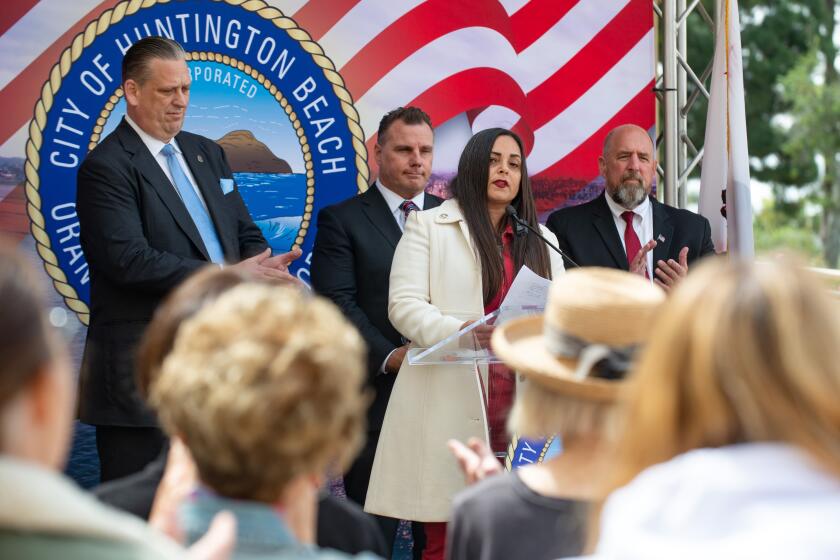Community Commentary: Columnists are wrong again about mesa plan
Last week, we told you how excited we were about the CPR (Community Promoted Restoration) for the Mesa, a restoration project for the Bolsa Chica mesa. The Bolsa Chica Land Trust, in cooperation with the Department of Fish and Game (DFG), developed this 10-year restoration plan, which is in the initial stages of environmental review.
The project includes a 65-acre native grassland, additional Southern California coastal sage scrub, seasonal wetlands, enhancements to the Warner Pond Environmentally Sensitive Habitat Area and riparian/herbaceous wetland habitats.
This plan is a responsible, innovative plan reviewed by DFG and preeminent biologists.
We’re dismayed that this paper has run factually incorrect columns attacking this plan (“More like a ‘heart attack for the mesa,’” Natural Perspectives, Feb. 10; “Bolsa Chica Land Trust’s composting plan is no good,” Natural Perspectives, Feb. 17). The public should not take the columnists’ wild claims at face value. Once again, the record needs to be set straight on their erroneous assumptions.
The columnists falsely claim that the lower bench of the mesa will be plowed three times a year. Here’s the reality: To prepare the land for restoration, the project will till 10 acres a year to remove the nonnative grasses and other weeds so native plants can be established. The Land Trust rejected widespread spraying of herbicides on the land and will remove invasive weeds by tilling, as has been done at the Audubon Starr Ranch Sanctuary. DFG and the staff of the Wildlife Conservation Board agree that this is a sound restoration practice. Neither the plans nor the Mitigated Negative Declaration for the project state the entire lower bench of the mesa will be tilled.
The columnists absurdly claim that the Land Trust would cut down existing coastal sage scrub, when that is exactly what will be planted on the mesa! The existing native plants on the mesa will not be disturbed during restoration.
Their concern for wildlife is misplaced. Remember, only one-tenth of the mesa a year will be worked, leaving adequate area for the gophers and ground squirrels. To suggest that the legless lizard is widespread on the mesa is simply an assumption on their part. The Land Trust has found this animal to be rare in the non-native weedy areas of the mesa and actually more common in the coastal sage scrub habitat we have already restored. This plan is good for wildlife.
The columnists’ concerns about other invasive plants moving into the freshly tilled areas is also misplaced. The tilled areas will not lie fallow. The whole idea of tilling the land is to remove weeds and replace them with native plants. These areas will continue to be weeded after the native plants are in place to decrease the re-occurrence of weeds.
Both of us are confident this is a workable plan for the restoration of the mesa. We believe the public does and will support this plan and that our city and region will be all the better for it.
We invite members of the public to see for themselves the good work the Bolsa Chica Stewards, the restoration team of the Land Trust, has already done on the mesa. Join us for the Stewards’ next work day at 9 a.m. March 19. We will meet in the parking lot on Warner Avenue. If you can’t make the work day, take a walk along the mesa. The growing coastal sage scrub plant community you will see has been planted by the Stewards.
To get a better picture of CPR for the Mesa, join us at our community meeting at 7 p.m. March 10 at the Huntington Beach Central Library. We trust you’ll be as excited as we are.
JOE SHAW and CONNIE BOARDMAN are members of the Huntington Beach City Council. Boardman is also the president of the Bolsa Chica Land Trust and Shaw a member of its board of directors.
All the latest on Orange County from Orange County.
Get our free TimesOC newsletter.
You may occasionally receive promotional content from the Daily Pilot.



